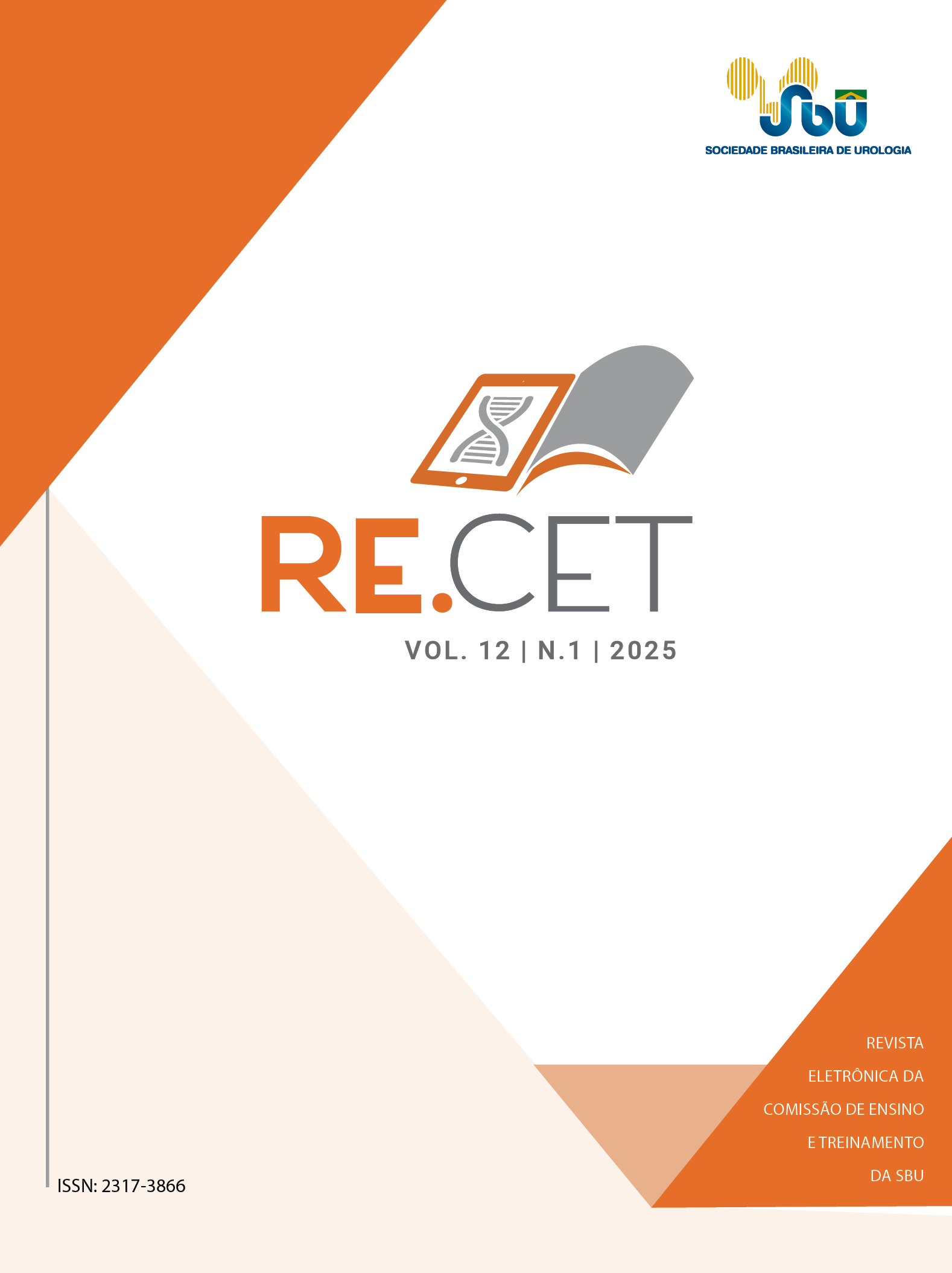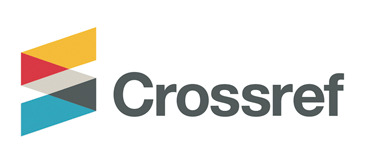R.E.N.A.L score - a tool for surgical planning: Retrospective study.
DOI:
https://doi.org/10.55825/RECET.SBU.0243Palavras-chave:
Carcinoma, R.E.N.A.L score, Kidney DiseasesResumo
Introduction: This study aims to demonstrate the proportion of partial and total nephrectomy based on preoperative staging of the R.E.N.A.L score in a 7-year from a single institution.
Materials and methods: Cohort study, the nephrometry score were available in 56 patients in our retrospective renal mass surgical database from 2017 to 2023. The R.E.N.A.L. score was analyzed both in its sum and its individual component scores according to the treatment approach.
Results: 56 medical records were included, according to graduation R.E.N.A.L. 14.3%, 53.6% and 32.1% were of low, moderate and high complexity, respectively. 53.6% were treated with partial nephrectomy. About 71% of the masses were clear cell carcinomas. The “R” and “L” components proved to be greater predictors of radical conduct as well as the higher the sum of this score (p<0.05). The mean R.E.N.A.L. score of the group treated with partial and total nephrectomies were: 7.40 ± 1.43 and 9.54 ± 1.39 (p<0.05). Those undergoing partial nephrectomy showed margin compromise in 37.5% of low complexities and 42% of moderate complexity.
Conclusion: In this study, in cases of moderate complexity, individual assessment proved to be essential, so that it was possible to perform partial nephrectomy in almost half of the cases, with a very slight increase in margin compromise in relation to low complexity tumors, from 37.5% to 42%. The R.E.N.A.L score alone did not prove to be a superior tool in deciding on surgical procedures in relation to individual analysis based on the surgeon's experience.
Referências
Kutikov A, Uzzo RG. The R.E.N.A.L. nephrometry score: a comprehensive standardized system for quantitating renal tumor size, location and depth. J Urol. 2009;182(3):844–853. doi: 10.1016/j.juro.2009.05.035.
Basu S, Khan I, Das R, Dey R, Khan D, Agarwal V. RENAL nephrometry score: predicting perioperative outcomes following open partial nephrectomy. Urol Ann. 2019;11(2):187. doi: 10.4103/UA.UA_93_18.
Muglia RMV, Westphalen AC, Reis HF, Zogbi OS, Silva GE, Reis RB, et al. Reprodutibilidade e concordância interobservador do escore nefrométrico R.E.N.A.L.: ênfase nos achados de imagem. Radiol Bras. 2017;50(1):7–12. Available from: http://www.rb.org.br/detalhe_artigo.asp?id=2811&idioma=Portugues
Uzzo RG, Novick AC. Nephron sparing surgery for renal tumors: indications, techniques and outcomes. J Urol. 2001;166:6–18.
Chaves LI, Carara DE, Krebs RK. Epidemiological profile on patients with renal cancer at a hospital in the south of Brazil. Arch Uro Ren Dis. 2020;3(2):1–4.
Escudier B, Porta C, Schmidinger M, Rioux-Leclercq N, Bex A, Khoo V, et al. Renal cell carcinoma: ESMO clinical practice guidelines for diagnosis, treatment and follow-up. Ann Oncol. 2019;30(5):706–720. doi: 10.1093/annonc/mdz056.
Jonasch E, Gao J, Rathmell WK. Renal cell carcinoma. BMJ. 2014;349:g4797. doi: 10.1136/bmj.g4797.
Kidney Cancer Surgery | American Cancer Society [Internet]. Available from: https://www.cancer.org/cancer/types/kidney-cancer/treating/surgery.html [Accessed 2024 Jan 13].
Canter D, Kutikov A, Manley B, Castellucci S, Simhan J, Smaldone MC, et al. Utility of the R.E.N.A.L.-nephrometry scoring system in objectifying treatment decision-making of the enhancing renal mass. Urology. 2011;78(5):1089. doi: 10.1016/j.urology.2011.04.035.
Turk I, Malkoç E, Maurice MJ, Kara O, Ramirez D, Nelson RJ, Dagenais RJ. Predictors of positive surgical margins in patients undergoing partial nephrectomy: a large single-center experience. Turk J Urol. 2019;45(1):17–21. doi: 10.5152/tud.2018.57767.
Downloads
Publicado
Como Citar
Edição
Seção
Licença
Copyright (c) 2025 Recet

Este trabalho está licenciado sob uma licença Creative Commons Attribution-NonCommercial 4.0 International License.









